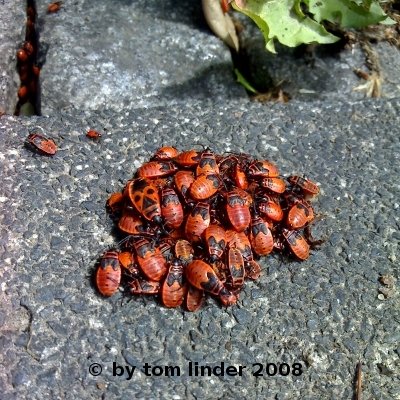Biology
tom linder.This site serves chiefly the purpose of presenting material accumulated during the course work of the bachelor of biology study and other activities.
It comprises protocols (in German language), glossaries (German), field trip impressions (English) and other stuff.
Especially the glossaries contain a lot of work and were quite helpful for preparing examinations.
I thought it would be a good idea to present the material on the web,
instead of stowing it away in some cabinet where nobody could ever made use of it.
The links below guide you to some of the biological topics covered during the studies,
otherwise you can use the sitemap to navigate to fields of interest.
The navigational pages of this web site and some of the course pages are in English, while other pages,
like the glossaries or most of the course protocols, are in German; thus reflecting the bilingual requirements of modern biology.
Note, that the site was formerly hosted at the data centers of the University of Bonn, Germany,
but as the University administration had decided in 2013 not longer to support the service of personal web sites, it was transferred to this domain.
Botany
Zoology
Microbiology
Immunology
Project study and Bachelor thesis
Trends in biological research
Common topics and tools

If ever someone wondered where "group sex" came from....:
Aggregations of Pyrrhocoris apterus, known as Fire Bug or sometimes incorrectly referred to as Linden Bug or Red Soldier Bug,
in the street 'Nussallee' of the university campus in Bonn (June 2008).
The street 'Nussallee' is in greater parts lined by lime-trees (linden trees) which are known hosts to these bugs,
as the insects preferentially feed on the seeds of the linden trees.
In summer month the bugs come together and aggregate in many little heaps similar to the one shown here.
The Fire Bugs are known model insects and can be reared in laboratories.
According to a review by Socha (1993) aggregations of fire bugs are constituted by immature stages of the bug,
which is corroborated by the image above, as mostly nymph stages are visble (only one bug in the middle left seems to be fully developed).
The aggregations are guided by chemical and visual stimuli, but the exact purpose of such behaviour seems to be unknown.
Socha also states that these aggregations do not occur every year and not always at the same scale,
which is confirmed by my personal observations.
Research work of the Max-Planck-Institute for Chemical Ecology in Jena has revealed, that Pyrrhocoris apterus,
as well as other species of the Pyrrhocoridae family, harbor special communities of symbiotic bacteria in their mid-gut.
These bacterial communities consist mainly of members of the groups Actinobacteria, Firmicutes, α- and γ-Proteobacteria and
provide essential vitamins of the B group to their hosts, thus enabling them to digest the linden tree seeds,
which are deficient of B vitamins and contain the noxious, cyclopropenoic fatty acid malvalic acid.
Socha, R. (1993) Pyrrhocoris apterus (Heteroptera) - an experimental model species: A review, Eur. J. Entomol., 90, 241-286
Sudakaran, S., Retz, F., Kikuchi, Y., Kost, C., Kaltenpoth, M. (2015) 'Evolutionary transition in symbiotic syndromes enabled diversification of phytophagous insects on an imbalanced diet.', The ISME Journal, 9, 2587-2604, DOI: 10.1038/ismej.2015.75
Back to the public area
